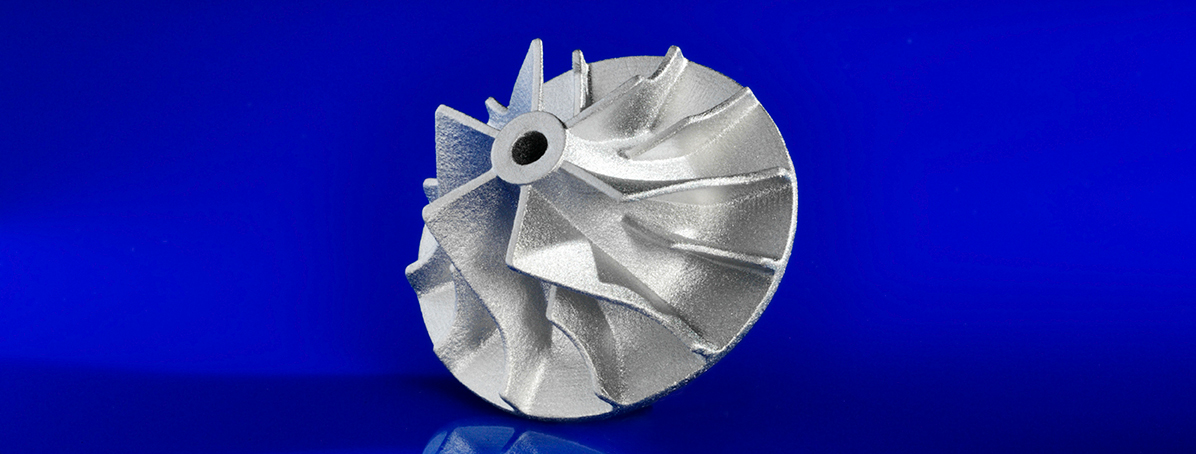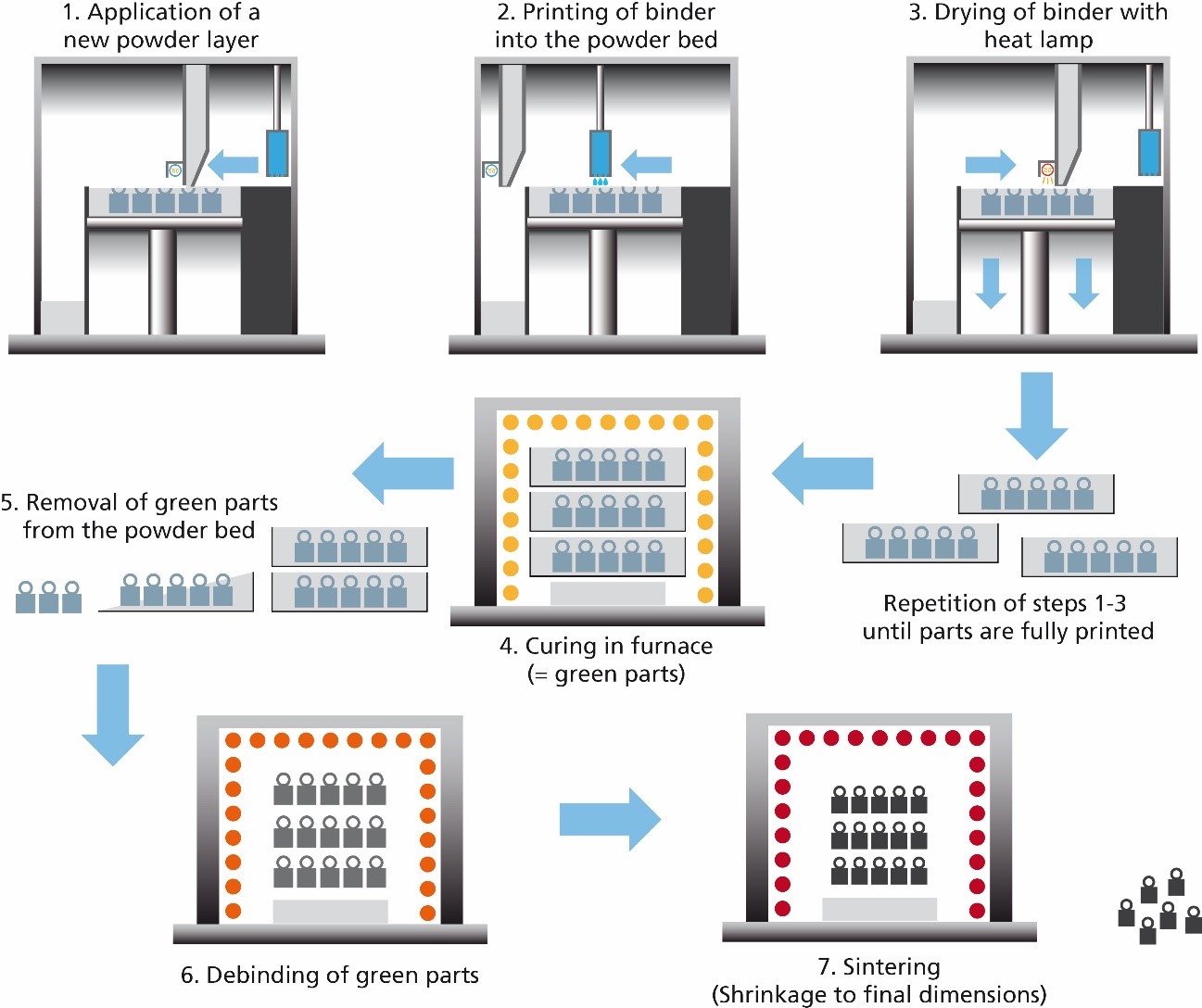The production of complex components by means of metal binder jetting is becoming relevant for more and more areas of application, such as automotive engineering or toolmaking. The process stands out from other 3D printing methods due to high process speeds, low material costs and an enormously wide range of materials. Due to the high production rates, direct printing is ideally suited for the series production of metal parts. Fraunhofer IFAM is involved in the entire process chain of metal binder jetting: From material selection to the printing process, debinding and sintering, and analysis.
Fast and flexible production of complex metal components
Metal binder jetting is a sinter-based additive manufacturing process. A powder layer is applied (1), into which an organic binder is selectively imprinted with an inkjet print head (2). The binder is then dried by a heat lamp (3). These process steps are repeated until the desired geometries are built up. After the binder has cured (4), the resulting green part is freed from loose metal powder (5) and then debinded (6) - during which the binder thermally decomposes - and sintered (7) in a furnace. During this process, the component is compacted and shrinks to its final dimensions.
Metal binder jetting offers several advantages over other 3D printing processes:
| Speed | The process is fast and has high production rates. Thus it is also suitable for series production. |
| Variety of materials | Various materials can be processed:
In particular, materials that are difficult or impossible to weld can be processed using the method. Depending on the sintering temperature and time, different densities can also be produced, resulting in a wide range of applications. |
| Design freedom | Thanks to the flexible design possibilities of the process, even very complex components can be printed from metal. This can reduce weight and save energy, for example. In addition, design changes can be implemented quickly. |
| Elimination of support structures | With the MBJ, no support structures or building plates are required. This leads to greater design freedom and a significant reduction in waste. |
| Cost-effective | Due to the high process speed, a large number of components can be produced more cost-effectively than with other AM processes. |
From material selection to printing and sintering: With us you get everything from a single source
Fraunhofer IFAM has been involved in additive manufacturing technologies for many years. Our institute is fully equipped for sinter-based additive manufacturing of metal parts and offers all technologies for printing, de-powdering, debinding, and sintering. With the help of our powder analytics, sintering activity and packing behavior of the starting powder can be characterized, which significantly influence the densification and shrinkage behavior during sintering. The development of the binder, as well as its residue-free decomposition, is also carried out at Fraunhofer IFAM. In determining suitable sintering parameters, we draw on our analytical capabilities and many years of experience in metal powder injection molding.
In detail we offer:
- Support in component selection and design suitable for production
- Comprehensive material and process development along the process chain
- Material-specific binder development
- Market studies and comparisons with other additive manufacturing technologies
- Training and workshops on metal binder jetting
When conducting trials, we have several ExOne Innovent, or Innovent+, systems, as well as an ExOne 25Pro, commercial sintering furnaces, and extensive analytics at our disposal.
Annual industry meeting for sinter-based additive manufacturing processes at Fraunhofer IFAM
Our staff have many years of expertise in the field of metal binder jetting. We are keen to share this experience and our knowledge with experts and to exchange ideas with the industry on a regular basis. For this purpose, we organize the internationally established workshop "Sinter-based Additive Manufacturing" at our institute in Bremen every fall. There, international speakers from industry and R&D provide insights into the latest advances and industrial implementation of MBJ.
 Fraunhofer Institute for Manufacturing Technology and Advanced Materials IFAM
Fraunhofer Institute for Manufacturing Technology and Advanced Materials IFAM
